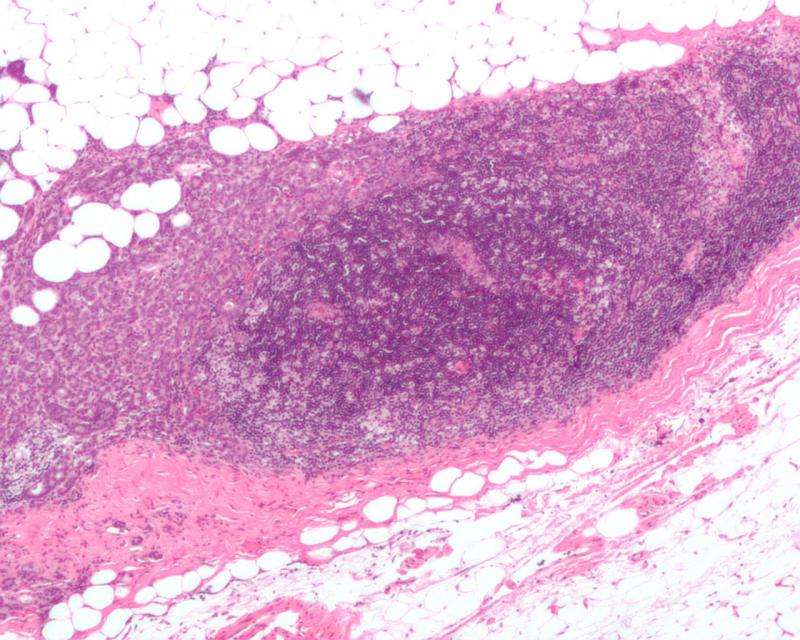Saturated fatty acids linked to breast cancer in postmenopausal women

Fatty acids in the breast may be useful indicators of cancer in postmenopausal women, according to a new study published online in the journal Radiology. The results may help researchers determine the underlying mechanisms behind breast cancer development in some patients.
The role of fat in breast cancer development and growth has been studied extensively using body mass index (BMI) and dietary fat intake.
"BMI is an important risk factor for breast cancer development," said Sungheon G. Kim, Ph.D., from the NYU Langone Medical Center. "While increased BMI may provide a protective effect for premenopausal women, postmenopausal women have an increased risk of developing breast cancer with increasing BMI."
The exact mechanism behind the increased risk in postmenopausal women with higher BMI is not fully understood. One possibility is the increased production of estrogen and/or adipokines, which are cell-signaling proteins secreted by adipose, or fat, tissue, but there have been few studies specifically looking at the role of breast fat in cancer development.
"Using a new method, we were able to directly measure the tissue where breast cancer begins in the hopes of understanding how fatty tissue correlates with cancer," said Melanie Freed, Ph.D., lead researcher of the study.
Researchers at the NYU Langone Medical Center developed a novel MRI method called gradient-echo spectroscopic imaging that can estimate fractions of different types of fat in breast adipose tissue as a part of clinical breast MRI exam.
Eighty-nine patients were included in the final analysis. Each patient's height and weight was measured at the time of the exam and their BMI was calculated. Fifty-eight women were premenopausal and 31 were postmenopausal. Breast cancer status was determined by a review of the patients' electronic medical record including any follow up procedures. Forty-nine patients had benign breast tissue, 12 had ductal carcinoma in situ, and 28 had invasive ductal carcinoma.
The results showed that a greater proportion of saturated fatty acids and a lower proportion of monounsaturated fatty acids were present in the breast tissue of postmenopausal women with invasive ductal carcinoma than in postmenopausal women with benign breast tissue.
Among the women with benign lesions, postmenopausal women had significantly higher polyunsaturated fatty acids and lower saturated fatty acids in their breasts than premenopausal women.
Research showed no correlation between BMI and fatty acid fractions in breast tissue, suggesting that the type of fat that makes up fatty breast tissue gives new information beyond the amount of overall body fat.
"Our research is ongoing," Dr. Kim said. "We need to investigate these higher levels of saturated fat and their direct correlation with tissue estrogen levels and cancer development. The results may point to a new risk factor for breast cancer."
More information: "Evaluation of Breast Lipid Composition in Patients with Benign Tissue and Cancer by Using Multiple Gradient-Echo MR Imaging," Radiology, 2016.


















